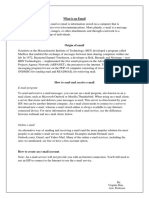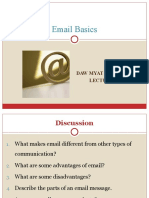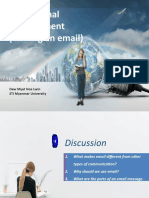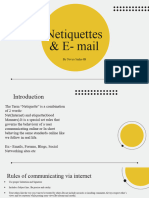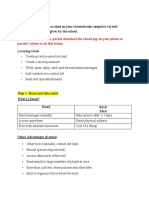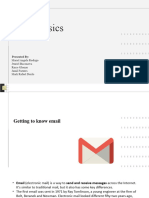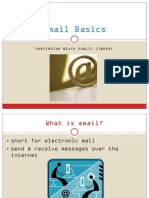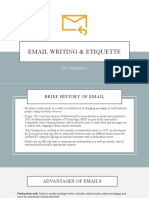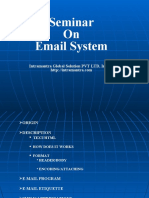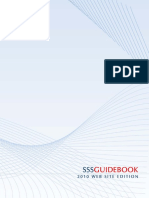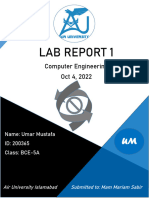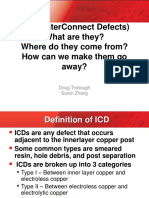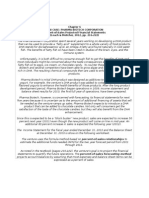0% found this document useful (0 votes)
54 views6 pagesModule 2
Lesson 2.1 covers the basics of email, including how to create an email account and the essential components of an email such as the recipient's address, subject line, and body. Lesson 2.2 discusses email etiquette, emphasizing the importance of professionalism in email communication, including proper greetings, proofreading, and avoiding emojis. Additionally, key email terminologies like attachments, threadjacking, and email signatures are defined.
Uploaded by
tcshs.lagare.ellaregine.pCopyright
© © All Rights Reserved
We take content rights seriously. If you suspect this is your content, claim it here.
Available Formats
Download as DOCX, PDF, TXT or read online on Scribd
0% found this document useful (0 votes)
54 views6 pagesModule 2
Lesson 2.1 covers the basics of email, including how to create an email account and the essential components of an email such as the recipient's address, subject line, and body. Lesson 2.2 discusses email etiquette, emphasizing the importance of professionalism in email communication, including proper greetings, proofreading, and avoiding emojis. Additionally, key email terminologies like attachments, threadjacking, and email signatures are defined.
Uploaded by
tcshs.lagare.ellaregine.pCopyright
© © All Rights Reserved
We take content rights seriously. If you suspect this is your content, claim it here.
Available Formats
Download as DOCX, PDF, TXT or read online on Scribd
/ 6
